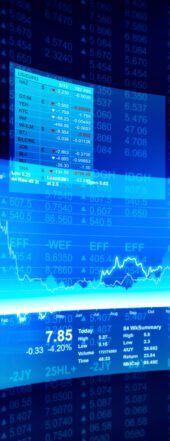



Big Data Projects Development
Our team has delivered over 100 projects in various industries. The main ones are: AI solutions, Healthcare, Fintech, Logistics, Social Networking, Education, IOT.
Projects Successfully completed
satisfied customers
modern technologies that we use
qualified engineers
own startup projects
Big data is becoming an integral part of our lives. We all use some kind of technology every day and come into contact with products and large companies. Companies offer us their products and, in turn, use the data we provide them (from tracking website conversions to personal information when placing orders). The time has come to understand in more detail how these huge flows of information are collected and what is done with them.
What is big data?
There is still no official and precise definition. What one person considers big data may be just a traditional data set in another person’s eyes. And here the question arises. How big is big data? According to Forbes, 2.5 quintillion bytes of data are created every day. Because big data is so large, new terminology was needed to define the size of that data. Big data consists of petabytes (more than 1 million gigabytes) and exabytes (more than 1 billion gigabytes), as opposed to the gigabytes typical of personal devices.
Ultimately, the term “big data” can be applied to the vast amount of data available to organizations that, due to its volume and complexity, cannot be easily managed or analyzed by many business intelligence tools.
How does Big Data work?
The main idea of big data is this: the more information you know, the faster you can find and make the right decision. In most cases, the information collection process is completely automated: there are advanced tools that run millions of actions simultaneously to give the company the best result.
Big data comes from many different sources: transaction information, CRM, web analytics tools, mobile apps, weather reports, social media, research repositories, real-time data sensors used in the Internet of Things, and so on. Data can be presented in raw form or pre-processed using mining tools so that it is ready for use (for example, for company analysts to develop hypotheses).
What is Big Data used for?
Big Data has many purposes, for example:
-
Product development. Knowing what needs users have, what shortcomings were in your previous products, and what products are popular, working on new products and services will be more effective.
-
Studying the behavior of the target audience. Big data allows you to collect data from social networks, advertising accounts and other sources to improve user interaction, create the right advertising messages and special offers.
-
Improved customer experience. For example, online retailers send weekly emails with recommendations tailored specifically to a specific customer. These recommendations are based on your previous purchase history or browsing and product search history.
-
Failure Prediction. The ability to predict mechanical failures is incredibly important when it comes to manufacturing, transportation, or human safety. Using information that is collected in real time will help identify potential problems before they arise.
-
Production optimization. Big Data is also widely used to properly organize the work process. Analysis of the information received simplifies planning and increases the speed of launching new projects.
Modern computing systems provide the speed, power, and flexibility needed to quickly access vast amounts and types of big data. Some data may be stored locally in a traditional data warehouse, but there are also flexible and low-cost storage and processing options using cloud solutions and data lakes!







